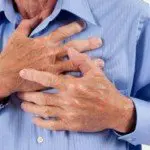The Biggest Killer in the US – Its not Hollywood
In medical spheres throughout the world, there is a certain issue known as the ‘Hollywood Heart-attack’. You’ve probably seen this before, the clutching chest, sudden collapse and grimace of agony that comes with every on-screen cardiac arrest.
For Lear, who began as a doctor and turned quickly into a patient, the Hollywood heart-attack was the first step in five years of medical narration, from one cardiac issue to the next, ending with that final stop in 1978. For whatever reason, in the years that followed, I continued to believe that the symptoms surrounding that Hollywood attack were the norm, and paradigm of how heart-attacks were meant to look and feel.
 However, I quickly realized that I was wrong, two years ago, when I experienced my own heart attack for the first time. For me, one minute I was fine, and the next I was feeling strangely unwell, suffering from a fluttering sensation at the base of my chest that rose upwards towards the throat. I felt a mild pressure on my chest, followed by chills and sudden nausea, mixed with diarrhea.
However, I quickly realized that I was wrong, two years ago, when I experienced my own heart attack for the first time. For me, one minute I was fine, and the next I was feeling strangely unwell, suffering from a fluttering sensation at the base of my chest that rose upwards towards the throat. I felt a mild pressure on my chest, followed by chills and sudden nausea, mixed with diarrhea.
There was no serious drama, no clutching my heart, just a bunch of different things that added up to a feeling I couldn’t quite name. It could have been a bad spot of seafood, too much wine or even the flu, but the pain in my chest made me ask my second husband whether what I was experiencing could be a heart attack. Of course, he suggested that such a thing was ridiculous, and told me it was just a stomach bug.
Yet, despite all of this, the slight pressure that I had experienced in my chest weighed on me, and I decided to contact my doctor to report my symptoms. After mentioning the diarrhea, which is a symptom that doesn’t often present in cardiac arrest, my doctor told me that the issue didn’t sound like a problem with my heart. He suggested that I saw the issue through for a little longer and went in for an EKG in the morning.
Eventually, the pressure did ease, and I slept through and woke the next morning feeling a lot better. I only went for the test that my doctor had suggested because I agreed to it, but I was fully expecting that I  would be told I was fine. However, the echocardiogram and the EKG said something entirely different. Apparently I had suffered a substantial heart attack. Not massive, not mild, but somewhere in between. Both me and my doctor were shocked.
would be told I was fine. However, the echocardiogram and the EKG said something entirely different. Apparently I had suffered a substantial heart attack. Not massive, not mild, but somewhere in between. Both me and my doctor were shocked.
Suddenly, I was trapped in a re-run, receiving treatment in the same hospital where my first husband had worked and died, in the same unit with the same cardiologist. The only thing that was different was the new husband wheeling me through the corridors. I had a stent implanted within an occluded artery and recovered quickly, with my doctor clearing me to leave in four days. However, after acquiring an infection, I ended up staying for about four weeks. That time helped me to learn a great deal more about women health and hearts.
The first surprise I learned was that the biggest killer of women in America was actually heart disease, not breast cancer, as many believe. It’s not much of a surprise really, when you consider how much the American Heart Association continues to tell us about looking after our hearts. Perhaps we all spend so much time worrying about cancer, that we don’t have time to be concerned about our hearts too. The truth is that the heart kills more people than every kind of cancer combined.
The second surprise I came across was that my heart attack and my first husband’s attack were textbook examples of how different the issues could be between the two genders. Men are more likely to suffer with a crushing pain, whereas women experience nausea. Women are also more likely to experience warning signs early than men, such as fatigue, and apparently, women are also more likely to die within a year of having a heart attack than men. Our symptoms are often so different and varied that we don’t actually know what it is we’re suffering from, which means that we do not feel fear or seek the help that we need. Though more men do suffer from heart attacks, a greater percentage of women actually die because of them.
A nurse told me that any issue between the nose and the pelvis could be a symptom of a heart attack in women. This encompassed the neck, jaw, back, shoulders, throat, arms, chest, abdomen and diaphragm. When I suggested how terrifying this information actually was, she told me that it wasn’t meant to frighten me, just inform me. After all, it’s important to be informed.
There are many theories as to why differences exist between the genders when it comes to cardiac arrests. Some people believe that it is because the arteries of a woman are typically much narrower than men’s, or because the microvascular system does not function as well. Some people suggest it is because a woman’s heart beats faster, or because it takes longer to settle between each beat. However, the real reason is left a mystery. In a survey of doctors that was conducted in 1996, two thirds of them were not aware of the differences that exist between genders when it comes to understanding heart attacks.
Until this millennium, there was little to no research on how heart attacks occur within women because the medical community, at large believed that females did not suffer heart attacks at all. When, in the 1950s, the American Heart Association introduced its first pamphlet, the information was given the title, ‘The way to a man’s heart’. Most studies used subjects that were all males, and men who suffered abnormal results were treated more aggressively than women who reported similar symptoms. When women reported these symptoms, they were two times more likely to receive a psychiatric diagnosis.
The first surprise I learned was that the biggest killer of women in America was actually heart disease, not breast cancer, as many believe.
Medicine didn’t really start catching up to the heart until 2001, following a study that was issued by the institute of medicine in the United States. This study analyze a lot of data to confirm a gender bias in various areas of medical research, urging a change.
The fact that we already know is that nearly half a million women every year suffer from heart disease. With numbers as high as this, it is essential to get help fast. The symptoms that can contribute to heart disease can include shoulder pain, neck pain, belly pain and back pain. However, what we do not know is when that back pain is actually a warning sign of a heart problem, or just a regular back issue. My doctor suggests that we shouldn’t be seeking help for every little problem, but if you do experience a new symptom, unlike one you’ve had before, speak to a doctor. It’s important to be informed.




COMMENT (1)
jennifer / March 27, 2016
It is hard to believe that’s whats killing women the most in this world